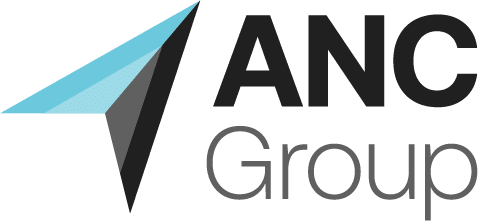Every year on the first Thursday of May, we celebrate World Password Day—a day dedicated to reminding us that “qwerty123” is definitely not a real password. Sure, World Password Day might not inspire parades or cake (unless you’re passionate about cybersecurity!), but it does serve as an important reminder of the critical role passwords play in protecting our personal and professional data.
With cyberattacks and data breaches on the rise, weak or poorly managed passwords are often the easiest way for hackers to access sensitive information. But changing your habits doesn’t have to be hard. Read on to learn about common password mistakes, how to fix them, and simple ways to strengthen your digital security.
Common Password Mistakes That Put You at Risk
A GoodFirms’ survey found that 30% of internet users have been victims of a cyber breach due to weak passwords. The 23andMe data breach, which has dominated the news cycle lately, was caused by a hacker who exploited reused usernames and passwords from other leaked data. Weak passwords can be easily guessed or cracked, leaving your personal information vulnerable.
This means that the first step to protecting yourself is recognizing your blind spots. Here are some common password mistakes you should avoid:
1. Using Easily Guessable Passwords
Passwords like “123456,” “password,” or even your pet’s name might be easy to remember—but they’re just as easy for a hacker to guess. Tools like dictionary attacks can cycle through thousands of predictable combinations in seconds.
2. Reusing Passwords Across Multiple Accounts
Using the same password for your email, bank account, and Netflix subscription might seem convenient, but it’s a recipe for disaster. Once hackers gain access to one account, they can use the same credentials to breach others—a tactic called credential stuffing.
3. Failing to Regularly Update Passwords
If you’re still using the same password from 2015, you’re playing a risky game. Older passwords are more susceptible to exposure through data breaches, and if they’re leaked, they’re as good as handing your keys to a thief.
4. Using Personal Information in Passwords
Avoid using names, birthdates, or common phrases like “Awesome2020.” Hackers often impersonate individuals or perform social engineering to guess passwords tied to such information.
5. Relying Solely on Browser-Stored Passwords
While convenient, trusting your browser to store passwords can expose you to added risks if your device or browser is compromised.
Best Practices for Creating Strong Passwords
While it does create some extra work, making strong passwords doesn’t have to be daunting. Here’s how to get it right this World Password Day:
1. Make Passwords Long and Complex
A secure password should be 12–16 characters long and include a mix of uppercase letters, lowercase letters, numbers, and special symbols. Example? “6qTw!P#97L*mZ” is much harder to crack than “Qwerty123.”
2. Use Passphrases
Rather than a single word, use a unique and memorable phrase that’s easy for you to recall but hard for others to guess. Something like “Potato$Market23Blue!” works well—you can even make it quirky to help you remember.
3. Avoid Dictionary Words and Common Substitutions
Hackers are onto “P@ssw0rd” and similar tricks. Stick to randomized sequences or passphrases instead. Don’t make it easy for bots and attackers to use dictionary attacks.
4. Update Passwords Regularly
Aim to refresh your passwords every 3-6 months, especially for high-value accounts like email, banking, and SaaS subscriptions.
5. Invest in a Password Manager
Password managers like Bitwarden or Dashlane encrypt and store your passwords securely, generating strong options you don’t need to memorize. But keep in mind that if these companies are ever hacked, your passwords go with them.
Why You Should Enable Two-Factor Authentication (2FA)
We get it—creating a complex, unique password for all of your accounts is a big ask. With two-factor authentication, you get another very strong layer of defense for all of your accounts, and it only takes an extra second of your time.
What Is 2FA?
2FA adds a second layer of security after you enter your password. This could be a one-time code sent via text/email, a biometric scan (like your fingerprint), or an app-generated code (like from Google Authenticator).
How Does 2FA Prevent Unauthorized Access?
Even if a hacker gets hold of your password, 2FA ensures they can’t access your account without the second form of verification. Pro tip? Opt for app-based authentication over SMS for extra security.
This World Password Day, It’s Time for “Password1234” to Go
Cybersecurity starts with the basics—and passwords remain your strongest front line of defense. Whether you’re securing personal accounts or managing a business, implementing better password practices is a simple yet effective way to protect against cyberattacks.
Think your business data might already be at risk? ANC Group offers expert cybersecurity support to help your company feel more secure. From network security audits to incident response, we provide solutions for complete peace of mind.
Want to check how secure your setup is? Contact us today to speak with one of our experts.

